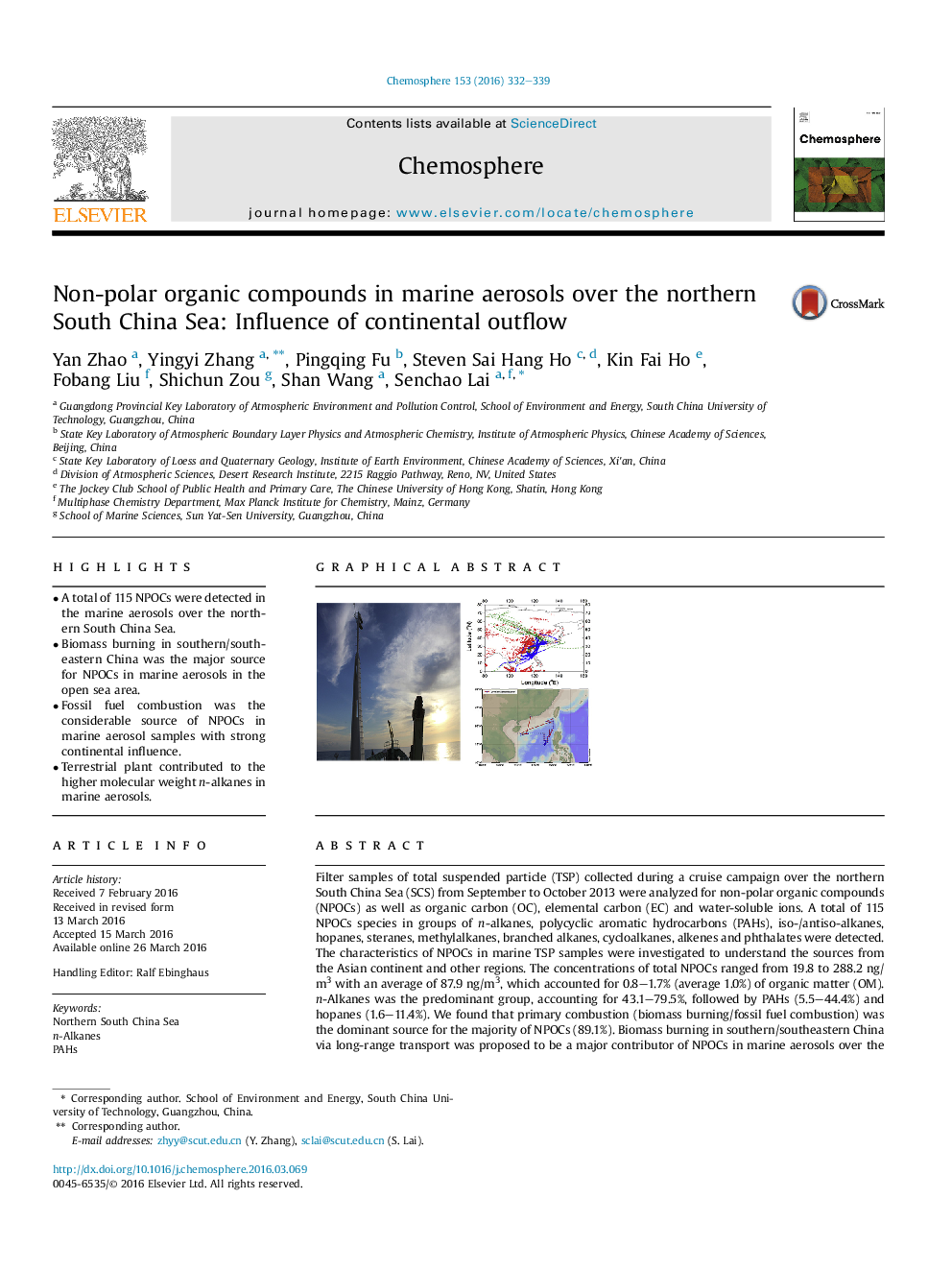| کد مقاله | کد نشریه | سال انتشار | مقاله انگلیسی | نسخه تمام متن |
|---|---|---|---|---|
| 4407643 | 1618818 | 2016 | 8 صفحه PDF | دانلود رایگان |
• A total of 115 NPOCs were detected in the marine aerosols over the northern South China Sea.
• Biomass burning in southern/southeastern China was the major source for NPOCs in marine aerosols in the open sea area.
• Fossil fuel combustion was the considerable source of NPOCs in marine aerosol samples with strong continental influence.
• Terrestrial plant contributed to the higher molecular weight n-alkanes in marine aerosols.
Filter samples of total suspended particle (TSP) collected during a cruise campaign over the northern South China Sea (SCS) from September to October 2013 were analyzed for non-polar organic compounds (NPOCs) as well as organic carbon (OC), elemental carbon (EC) and water-soluble ions. A total of 115 NPOCs species in groups of n-alkanes, polycyclic aromatic hydrocarbons (PAHs), iso-/antiso-alkanes, hopanes, steranes, methylalkanes, branched alkanes, cycloalkanes, alkenes and phthalates were detected. The characteristics of NPOCs in marine TSP samples were investigated to understand the sources from the Asian continent and other regions. The concentrations of total NPOCs ranged from 19.8 to 288.2 ng/m3 with an average of 87.9 ng/m3, which accounted for 0.8–1.7% (average 1.0%) of organic matter (OM). n-Alkanes was the predominant group, accounting for 43.1–79.5%, followed by PAHs (5.5–44.4%) and hopanes (1.6–11.4%). We found that primary combustion (biomass burning/fossil fuel combustion) was the dominant source for the majority of NPOCs (89.1%). Biomass burning in southern/southeastern China via long-range transport was proposed to be a major contributor of NPOCs in marine aerosols over the northern SCS, suggested by the significant correlations between nss-K+ and NPOCs groups as well as the analysis of air mass back-trajectory and fire spots. For the samples with strong continental influence, the strong enhancement in concentrations of n-alkanes, PAHs, hopanes and steranes were attributed to fossil fuel (coal/petroleum) combustion. In addition, terrestrial plants waxes were another contributor to NPOCs.
Figure optionsDownload as PowerPoint slide
Journal: Chemosphere - Volume 153, June 2016, Pages 332–339
